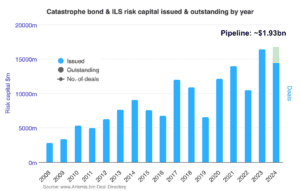Changes to federal rules could draw newcomers to open enrollment, which starts Nov. 1
Minneapolis, MN – Open enrollment for Affordable Care Act (ACA) health plans begins Nov. 1, and several changes could help bolster enrollment. Healthinsurance.org explains what’s changing, including new eligibility for DACA recipients, state-specific developments and new duration limits on short-term health insurance plans.
In most states, open enrollment for 2025 Marketplace coverage is Nov. 1, 2024, through Jan. 15, 2025.
“Open enrollment will be here soon, and several changes should be on people’s radar,” said Louise Norris, health policy analyst for healthinsurance.org.
DACA recipients now qualify for Marketplace coverage and subsidies
As a result of a Biden administration rule change, about 100,000 DACA recipients — people in the Deferred Action for Childhood Arrivals program — will be eligible for ACA Marketplace plans and federal premium subsidies, beginning Nov. 1. The new rule also makes DACA recipients eligible for Basic Health Program (BHP) coverage, although two of the three states that have BHPs already allow DACA recipients to enroll.
However, 19 attorneys general are seeking to have the DACA eligibility rule delayed and overturned. Oral arguments are scheduled for mid-October, and a ruling could come shortly before the start of open enrollment. So there is still some uncertainty around whether DACA recipients can enroll in Marketplace coverage for 2025.
Short-term health insurance plans include new duration limits
A new federal rule limits the duration of all short-term health insurance plans – effective Sept. 1, 2024, or later – to four months, including renewals. This is significantly less than the 36 months most states previously allowed.
This means that consumers would be able to buy a short-term plan on or after Sept. 1 and potentially keep it through the end of the year. But open enrollment is the first opportunity for many of these consumers to find replacement coverage through the Marketplace for 2025.
“The new federal rule prevents consumers from relying on short-term health insurance policies for longer periods of time,” Norris said. “Missing open enrollment this fall could leave these consumers with little to no full-year coverage options for 2025.”
Some states offer their own subsidies
Last year, 93 percent of Marketplace enrollees received federal premium tax credits, which lowers the cost of coverage. Enhanced federal premium subsidies under the American Rescue Plan (ARP) will still be available for 2025 thanks to the Inflation Reduction Act (IRA).
Nine states also offer state-funded subsidies, and for 2025 coverage, those subsidies will increase in California and New Mexico. New York will also add a new subsidy program for 2025 coverage.
Colorado, on the other hand, is reducing its subsidy program. Beginning in 2025, the eligibility threshold for Colorado state subsidies returns to 200% of the federal poverty level (FPL), down from 250% in 2024.
Insurers enter/exit markets for 2025
Numerous insurance carriers are entering state Marketplaces for 2025. Notably, WellPoint will now be available in Texas, Florida, and Maryland. Other insurers are also expanding into Florida (Simply Healthcare Plans); Indiana (UnitedHealthcare); Michigan (HAP CareSource); and New Hampshire (WellSense).
States that will see carriers exit Marketplaces include: Indiana, Kansas, New Mexico, Pennsylvania, South Carolina, Tennessee, Texas, Utah and Washington.
New consumer protections may impact enrollment process
In July, the federal government updated its protocols to protect consumers from unauthorized changes to their health coverage. The new policy requires that consumers verify brokers are authorized to assist with their enrollments on HealthCare.gov or on an approved enhanced direct enrollment platform. The steps consumers must take may vary, depending on the broker. States that run their own exchanges have their own protocols for ensuring that enrollments and plan changes are done with enrollees’ consent.
“This new requirement is intended to protect consumers so they aren’t fraudulently enrolled in a health plan or switched to a different plan without their knowledge,” explains Norris. “But it means consumers need to plan ahead, so they don’t run out of time to get enrollment help from a broker.”
Healthinsurance.org provides online resources for consumers about individual and family health insurance. Healthinsurance.org, owned by HealthInsurance.org, LLC, has been providing consumer information about health insurance and health reform for over 25 years.
Contact:
[email protected]




